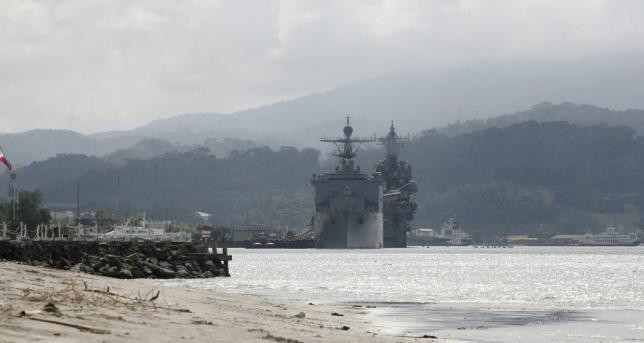Philippines: Cold War era Subic Bay military base to reopen amid China tensions

More than 20 years after the Philippines kicked out the US military from Subic Bay, it is re-opening the base again as territorial tensions with China continue to escalate.
The Philippines plans to station new fighter jets and two frigates at the former US naval facility from early next year, with the possibility of the US military returning to the base, although in a different capacity to its pre-Cold War use.
Under the recently signed 'Enhanced Defence Cooperation Agreement with Washington, the US military can now deploy its assets at Philippine bases for longer periods of time, build barracks and facilities for logistics purposes.
The agreement has been frozen since left-wing Philippines politicians challenged its constitutionality last year. The Supreme Court is expected to issue a ruling in the coming months, Reuters reported.
US warships have called regularly at Subic Bay since 2000 but this has only been confined to docking during exercises with the Philippine military or to use its commercial facilities for repairs and resupply.
The US Pentagon has said that there have been informal talks about Philippine base locations under the agreement but no plans would be implemented until the Supreme Court issues a ruling.
Subic Bay was converted into an economic zone after the Philippines terminated an agreement with Washington to allow the US to maintain a one of its largest naval facilities in the world. It was shutdown in 1992.
"A return to Subic Bay, this time led by the Philippine air force, would seem to be a prudent defensive response."
ChannelNewsAsia said Subic Bay's deep water harbour lies on the western side of the Luzon island, which faces the China Sea, allowing any military stationed there to respond more quickly to acts deemed as territorial aggression.
The Philippines Defence Undersecretary Pio Lorenzo Batino told Reuters that his country's military has signed an agreement in May with the economic zone's operator, the Subic Bay Metropolitan Authority, to use parts of the installation under a renewable 15 year lease.
The Philippines, in addition to beefing up security cooperation with the US, Japan and Vietnam, has announced plans to spend $20bn over the next 13 years, to modernise its armed forces, which Reuters says is among the weakest in Southeast Asia.
Two FA-50 light attack fighters built by Korea Aerospace Industries, the first among a dozen ordered in 2014, would be based at the former Cubi Naval Station from early 2016, two Philippine generals told Reuters.
The two planes are scheduled to arrive in the Philippines in December.
The full squadron of FA-50s would be based at Subic, as well as the 5<sup>th Fighter Wing, which would relocate from a rundown base in northern Luzon, the generals who declined to be identified said.
The two naval frigates would be based at the Alava Port.
"There are existing facilities in Subic Bay. We need only to refurbish them," one of the generals told Reuters.
Return to Subic Bay a prudent defensive response
Patrick Cronin, a regional expert at the Centre for a New American Security in Washington said: "A return to Subic Bay, this time led by the Philippine air force, would seem to be a prudent defensive response. Maritime patrol aircraft or drones could eventually provide persistent coverage of Chinese movements in the area."
Subic Bay is only 145 nautical miles from Scarborough Shoal, which China seized from Manila in 2012 after a three month standoff with the Philippine navy. The disputed Spratly islands, where China is building seven man-made islands, some with military facilities, lies further to the southwest of the shoal.
China, which claims nearly all of the South China Sea and is in territorial disputes with several Southeast Asia nations over this, has said that it was aware of reports of the arms build-up.
"We hope that the Philippines does more to benefit regional peace and stability," the Chinese defence ministry said in a statement sent to Reuters.
© Copyright IBTimes 2025. All rights reserved.






















